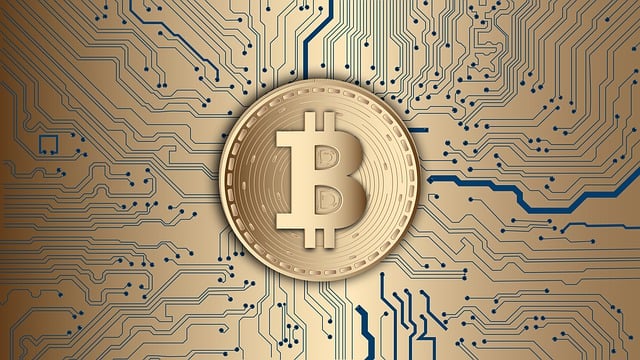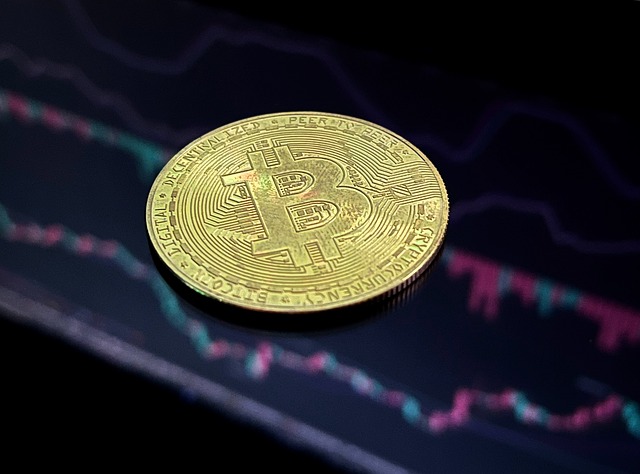Blockchain-based DeFi lending protocols revolutionize peer-to-peer borrowing but face significant challenges, including fraud, hacking, market volatility, and smart contract vulnerabilities. To ensure sustainability, these risks must be addressed through enhanced security, regulatory frameworks, user education, diversified investments, and robust governance, fostering a secure and inclusive financial ecosystem.
Blockchain technology is reshaping financial systems with its decentralized, transparent, and secure nature. This article explores two key facets: Understanding Blockchain Technology and its revolutionary impact, and DeFi Lending Protocols, which are democratizing access to financial services. We delve into the benefits and risks of decentralized lending, explain how DeFi protocols function, and discuss strategies for mitigating associated risks. By understanding these concepts, we can navigate the evolving landscape of DeFi lending protocols and their risks effectively.
- Understanding Blockchain Technology: A Decentralized Revolution
- DeFi Lending Protocols: Unlocking Financial Services
- Benefits and Risks of Decentralized Lending
- How Do DeFi Lending Protocols Work?
- Mitigating Risks in the World of DeFi Lending
Understanding Blockchain Technology: A Decentralized Revolution

Blockchain technology is a groundbreaking innovation that has sparked a decentralized revolution in various industries, fundamentally transforming how data is stored, shared, and secured. At its core, blockchain is a distributed digital ledger that records transactions across multiple nodes in a secure and transparent manner. This decentralized nature eliminates the need for intermediaries, such as banks or governments, providing users with greater control over their assets and data.
In the context of DeFi (decentralized finance) lending protocols, blockchain technology offers unprecedented opportunities and risks. DeFi platforms leverage smart contracts to facilitate peer-to-peer lending without traditional financial institutions. This enables borrowers to access loans directly from lenders, potentially offering more favorable terms. However, as the popularity of DeFi grows, so do the associated risks. The decentralized and often anonymous nature of these protocols can make them vulnerable to fraud, hacking attempts, and market volatility, posing significant challenges that require careful consideration and innovative solutions.
DeFi Lending Protocols: Unlocking Financial Services

Decentralized Finance (DeFi) lending protocols have emerged as a revolutionary force in the world of finance, offering users unprecedented access to financial services without traditional intermediaries. These protocols, built on blockchain technology, enable peer-to-peer lending and borrowing, allowing individuals to lend their crypto assets and earn interest or borrow funds secured by their digital holdings. DeFi lending protocols have gained significant traction due to their potential to democratize finance, providing economic opportunities to a broader range of people, especially those underserved by traditional banking systems.
However, alongside the promise of DeFi comes a set of risks. The decentralized nature of these platforms means that users are responsible for securing their own funds, often through complex smart contracts. This introduces vulnerabilities, as demonstrated by several high-profile hacks and smart contract bugs. Additionally, the lack of regulatory oversight in the DeFi space can make it challenging to protect investors from fraudulent activities or market manipulations. As DeFi lending protocols continue to evolve, addressing these risks through enhanced security measures, regulatory frameworks, and user education will be crucial to ensure their long-term sustainability and widespread adoption.
Benefits and Risks of Decentralized Lending

Decentralized lending, facilitated by DeFi (decentralized finance) lending protocols, offers a promising alternative to traditional financial systems. One of its key advantages is enhanced accessibility—borrowers can gain access to credit without relying on intermediaries like banks, enabling greater financial inclusivity. Additionally, these platforms often provide better interest rates and more flexible borrowing terms, catering to diverse needs in a non-centralized manner. Transparency is another boon; blockchain technology ensures all transactions are recorded immutably, promoting trust and accountability.
However, alongside these advantages, there are significant risks associated with DeFi lending protocols. The decentralized nature also means borrowers might face higher credit risks as collateral requirements can vary widely, and there’s no central authority to provide guarantees or insurance. Smart contract vulnerabilities and hacking incidents have led to substantial losses in the past, underscoring the need for robust security measures. Furthermore, regulatory uncertainty surrounding DeFi remains a concern, as these platforms often operate outside traditional financial frameworks, leaving borrowers and lenders vulnerable to changing legal landscapes.
How Do DeFi Lending Protocols Work?

DeFi lending protocols have gained significant traction in the blockchain world, offering a decentralized alternative to traditional financial systems. These protocols enable users to borrow and lend cryptocurrencies directly from one another without intermediaries like banks. The process involves smart contracts that automate the lending process, ensuring transparency and security. Borrowers lock up collateral in the form of cryptocurrency assets, which serves as a safety net for lenders.
While DeFi lending offers numerous benefits, including accessibility and potential high returns, it also comes with risks. Volatility in cryptocurrency markets can impact both the value of collateral and loans. Additionally, smart contract vulnerabilities and hacking attempts pose significant threats to users’ funds. As such, understanding the underlying technology, carefully selecting protocols with robust security measures, and diversifying investments are crucial steps for navigating this innovative yet complex financial landscape.
Mitigating Risks in the World of DeFi Lending

In the dynamic landscape of decentralized finance (DeFi), lending protocols have emerged as a game-changer, offering unprecedented access to credit and financial services. However, alongside these benefits, DeFi lending protocols and their risks must be carefully navigated. The blockchain technology that underpins DeFi provides transparency and security, but it also introduces new challenges related to smart contract vulnerabilities, market volatility, and regulatory uncertainty.
To mitigate these risks, users and developers alike employ various strategies. Enhanced security measures, such as regular audits and bug bounties, are implemented in smart contracts to prevent hacks and fraud. Decentralized governance models aim to democratize decision-making processes, ensuring community oversight and reducing the impact of single points of failure. Additionally, diversification of assets and careful risk management strategies help users navigate market volatility. As DeFi continues to evolve, addressing these risks will be crucial for fostering a robust, secure, and inclusive financial ecosystem.
Blockchain technology has introduced a new era of financial services with the emergence of DeFi lending protocols. These decentralized systems offer unprecedented access to credit and investment opportunities, empowering individuals worldwide. However, as with any innovative yet complex system, DeFi lending comes with inherent risks that must be carefully navigated. By understanding both the potential benefits and challenges, users can make informed decisions, ensuring a more secure and prosperous future in the evolving landscape of decentralized finance.
